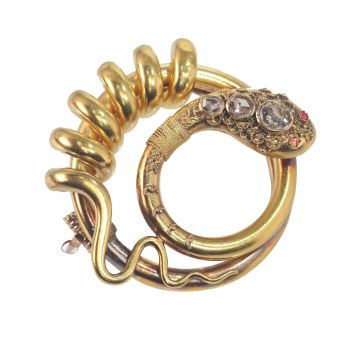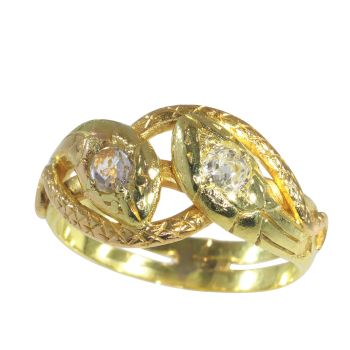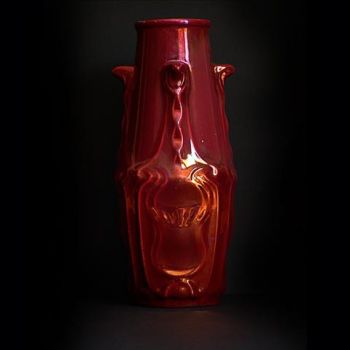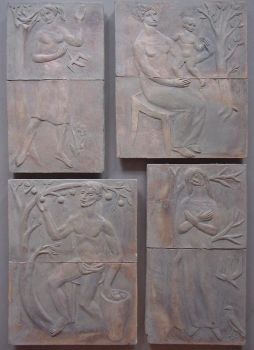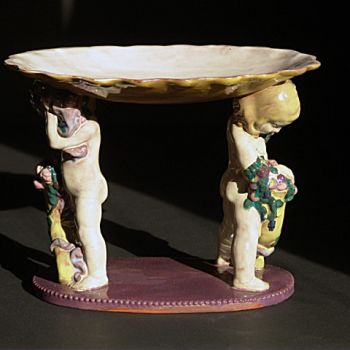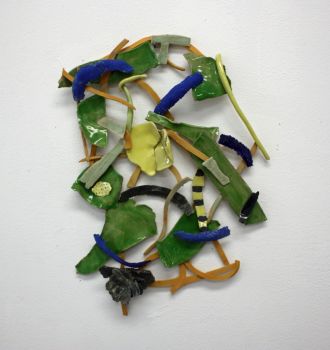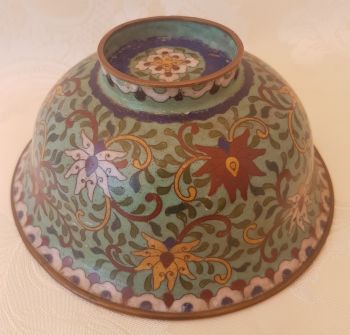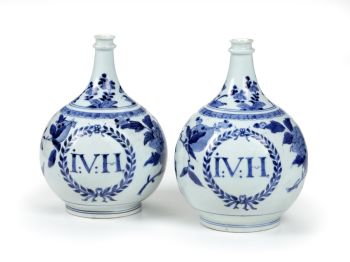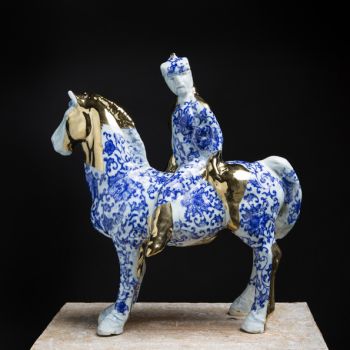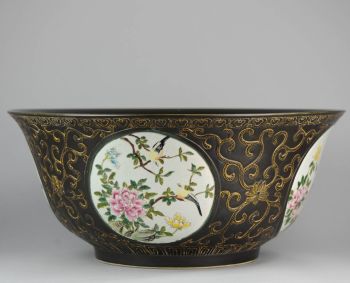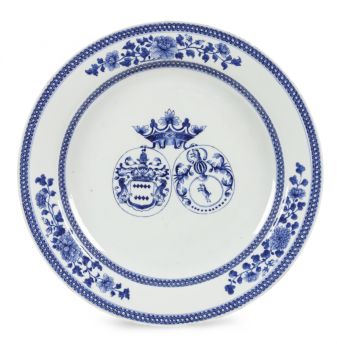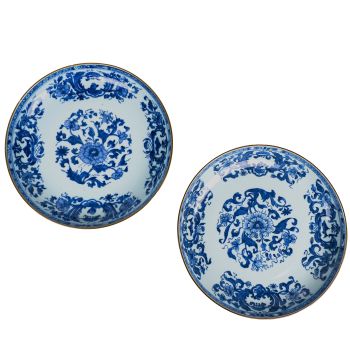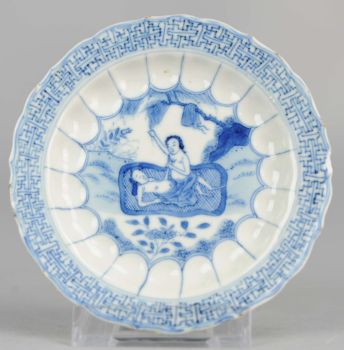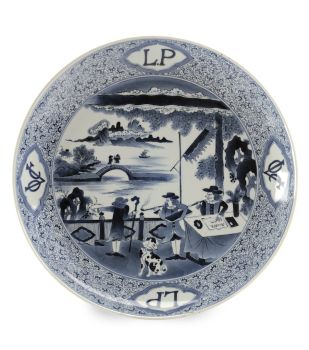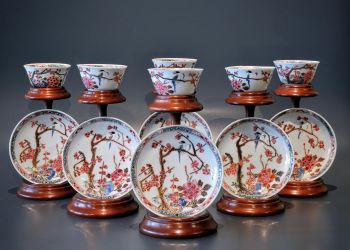Chinese porcelain monochrome turquoise crackled vase, Kangxi period (1661-1722), Qing Dynasty 1661 - 1722
Unknown artist
PorcelainChinese porcelain
13.50 cm, ø 7 cm
ConditionVery good
Price on request
Menken Works of Art
- About the artworkA Chinese porcelain monochrome turquoise vase.
China, Kangxi period (1661-1722).
The vase of baluster form with a rounded belly, the elongated cylindrical neck with a flaring rim, covered in an attractive crackled turquoise glaze, stopping just above the footrim
About turquoise glaze:
Turquoise glaze owes its color to copper oxide in an alkaline glaze mixture. It has a long history in Chinese ceramics, dating back at least to the Tang dynasty. Interest in turquoise glaze was also present among Middle Eastern potters, though their methods to achieve similar results differed. The technology varied depending on the material the glaze was applied to.
One of the curiosities of the Chinese potters' techniques was their use of saltpeter, a soluble material, often unfitted. The saltpeter was mixed with quartz and water (and sometimes with lead oxides or carbonates) to create low-temperature glazes.
After analyzing a late 19th-century raw turquoise glaze used at Jingdezhen, the renowned French ceramic chemist Georges Vogt wrote in 1900:
'The simplicity with which the Chinese prepare this turquoise ... is truly remarkable. Nothing in its composition needs to be melted, or to be fitted. The only preparation needed is to grind together the saltpeter, the quartz and the copper powder in suitable proportions and it is ready to be used on porcelain vases.'
Ref:
A vase of similar shape is in the Metropolitan Museum of Art collection, accession number: 79.2.93
Dimensions:
Height 13.5 cm, diameter 7 cm.
Condition:
A small chip to the foot rim, furthermore in perfect condition.
Inv. No: MW66 - About the artist
It might happen that an artist or maker is unknown.
Some works are not to be determined by whom it is made or it is made by (a group of) craftsmen. Examples are statues from the Ancient Time, furniture, mirroirs, or signatures that are not clear or readible but as well some works are not signed at all.
As well you can find the following description:
•“Attributed to ….” In their opinion probably a work by the artist, at least in part
•“Studio of ….” or “Workshop of” In their opinion a work executed in the studio or workshop of the artist, possibly under his supervision
•“Circle of ….” In their opinion a work of the period of the artist showing his influence, closely associated with the artist but not necessarily his pupil
•“Style of ….” or “Follower of ….” In their opinion a work executed in the artist’s style but not necessarily by a pupil; may be contemporary or nearly contemporary
•“Manner of ….” In their opinion a work in the style of the artist but of a later date
•“After ….” In their opinion a copy (of any date) of a work of the artist
•“Signed…”, “Dated….” or “Inscribed” In their opinion the work has been signed/dated/inscribed by the artist. The addition of a question mark indicates an element of doubt
•"With signature ….”, “With date ….”, “With inscription….” or “Bears signature/date/inscription” in their opinion the signature/ date/ inscription has been added by someone other than the artist
Are you interested in buying this artwork?
Artwork details
Related artworks
Unknown artist
Monumental wooden icon: Saint Nicolas of Mozaisk1600 - 1650
Price on requestKunsthandel H.W.C. Dullaert Icons
1 - 4 / 12- 1 - 4 / 24
Unknown artist
Series of 6 Chinese cups and saucers (Yongzheng period)1722 - 1735
Price on requestKuipers Kunst & Antiek
Unknown artist
Series of 6 Chinese cups and saucers (Yongzheng period)1722 - 1735
Price on requestKuipers Kunst & Antiek
1 - 4 / 24Unknown artist
A Japanese bronze Hu flower vase, Edo / Meiji, 19th century19th century
Price on requestMenken Works of Art
1 - 4 / 12








